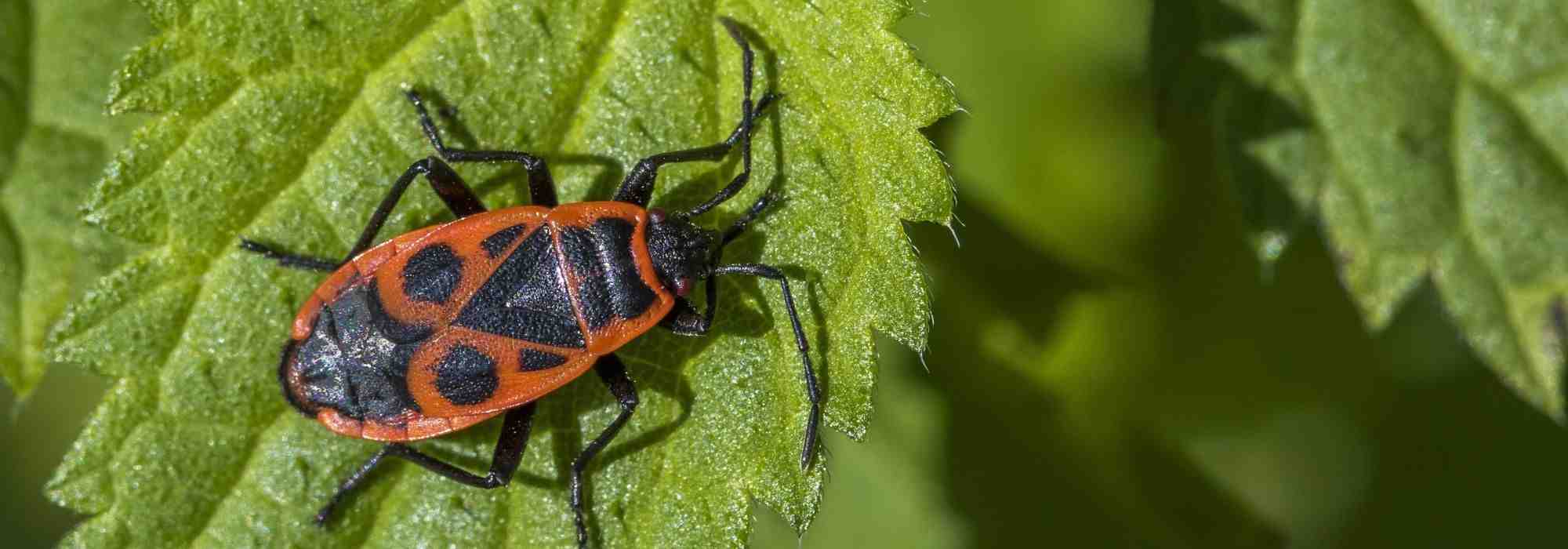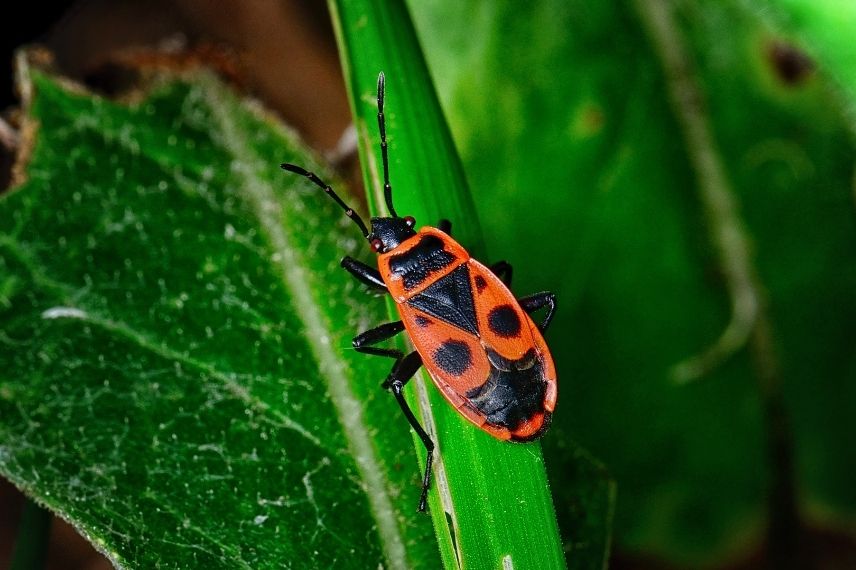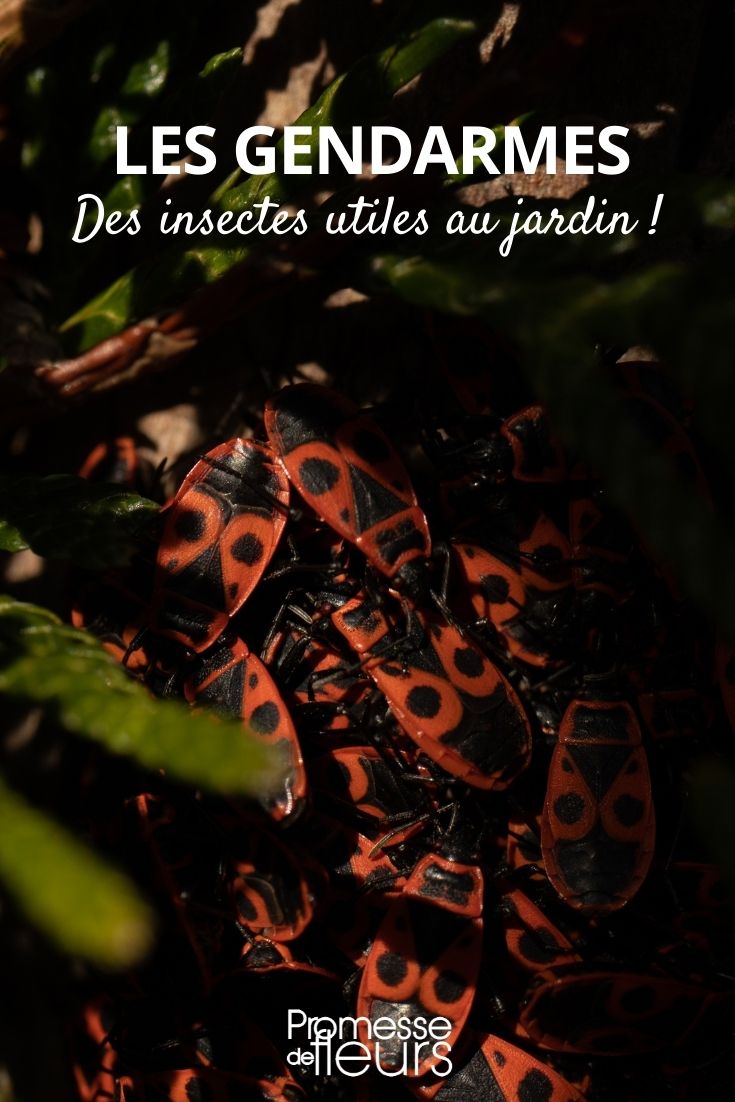
Firebugs, red and black insects that are beneficial for the garden
Tips for preserving these gardening auxiliaries
Contents
Soldier beetles, also known as soldiers or swiss, are insects commonly observed in gardens. Quite elegant with their shells adorned with red and black patterns reminiscent of an African mask, they live in groups and are harmless. Discover their way of life and their benefits in a garden.
The firebug, or Pyrrhocoris apterus, a common and elegant insect
The firebug or Pyrrhocoris apterus is a small red and black insect with an elongated shape, measuring about 1 cm in length. It is known by many nicknames, such as soldier, Swiss, red bug, or midday seeker. Although it belongs to the category of true bugs, it does not share their unpleasant odour and is perfectly harmless to both humans and gardens. It has a flat, orange-red shell on top, which is very decorative as it is adorned with small triangular and round black patterns, reminiscent of an African mask. These colourful patterns are thought to impress and deter its predators. The firebug has 6 legs and moves solely by walking, although it has wings.

Pyrrhocoris apterus
Where do the firebugs live?
Firebugs appreciate warmth and enjoy basking in the sun on stones or soil. They generally live in tree trunks or at the base of trees. They are social insects and often move in groups. They can be seen from spring until the end of autumn. They mate in spring, after which the females lay around fifty eggs under stones, leaves, tree bark, or in the soil. After two weeks, the eggs hatch, and small orange larvae emerge.

When mating, Pyrrhocoris apterus are in opposition. On the right, a group of firebugs on a tree trunk
What do firebugs eat?
Firebugs are piercing-sucking insects with a mouth cavity equipped with a rostrum. Using their rostrum, they absorb the juices contained in the stems, leaves, and seeds of plants. They particularly enjoy mallows, hibiscus, hollyhocks, and linden, often gathering at the base of the latter. However, they may occasionally also consume insects, such as aphids or scale insects, as well as eggs and larvae.
Do not confuse them with other insects, such as harlequin bugs, which are striped red and black, or the deadly nightshade bugs, whose shells display the same patterns but emit an unpleasant odour, nor with the lily beetles, which have a solid red shell and cause damage to these flowers.

From left to right: harlequin bug, deadly nightshade bug (its head is red unlike the firebug which has a black head), and lily beetle
What is the usefulness of firebugs in a garden?
Firebugs, sometimes feeding on aphids and scale insects, are considered useful allies in the garden, as they help the gardener get rid of harmful insects for young plants and flowers. They also contribute to the decomposition of plant material in a garden, which plays a vital role in maintaining essential natural balance.
How to welcome firebugs to the garden?
For a welcoming garden, you can provide a few plants that they particularly enjoy. You can choose from mallows, hollyhocks, hibiscus, or even a lime tree, whose fruits they love.
As they are sensitive to cold and winter is their enemy, make a pile of fallen leaves in a corner or at the base of a tree. This will allow them to take refuge there during winter.
Finally, ban all insecticidal and pesticidal products to avoid exterminating them. Indeed, there are other natural ways to regulate populations if needed. To preserve the biodiversity of a garden, for example, prioritise welcoming the greatest number of species, which will help create a natural balance among animals.
 Flower of mallow, hollyhock, and hibiscus</caption]
Flower of mallow, hollyhock, and hibiscus</caption]
- Subscribe!
- Contents
































Comments